By Sam McGowan
As the landing craft carrying the invading Allied ground forces of Operation Overlord motored toward the Normandy beaches on June 6, 1944, they were protected and supported by the largest aerial armada the world has ever seen. In spite of medium-level clouds, a covering umbrella of American and British fighters kept the skies clear of German fighters.
Squadrons of Douglas A-20 Havoc light bombers and fighter bombers came in low over the beaches to bomb and strafe German positions and gun emplacements on the shore. Large formations of Martin B-26 Marauder medium bombers dumped their bomb loads on German gun positions a few minutes before H-Hour. A stream of glider-towing transports passed over the ships that had brought the troops across the English Channel.
Earlier that morning those same transports delivered loads of American and British paratroopers onto the drop zones around the town of St.-Mere-église. The American light and medium bombers, fighter bombers, and transports were all from Lt. Gen. Lewis H. Brereton’s United States Ninth Air Force.
Dedicated Ground Support
Along with the British Second Tactical Air Force, the Ninth Air Force was formed specifically to support the ground forces whose lot was to fight in Western Europe. The D-Day landings commenced the final and best-known period of Ninth Air Force’s wartime service, but by June 6, 1944, it had been in combat almost two years and was in the second phase of the it’s colorful history.
Furthermore, the Ninth Air Force of Normandy and Western Europe took an entirely different role than it played in 1942 and 1943, when it was a multifunction U.S. Army air force assigned to support British forces and conduct strategic bombing operations in the Middle East.
The creation of the unit that came to be known as the Ninth Air Force occurred in a somewhat roundabout manner, primarily as a result of Allied reactions to enemy activity in different parts of the globe. In early 1942, the Allied Combined Chiefs of Staff decided to consider the Far East and Middle East as interdependent areas of operation, with resources to be allocated according to the military situation at the time. The air routes that had been established from the United States and Europe to the Far East passed through the Middle East, so it was logical to consider the two areas together when it came to reinforcement in time of emergency.
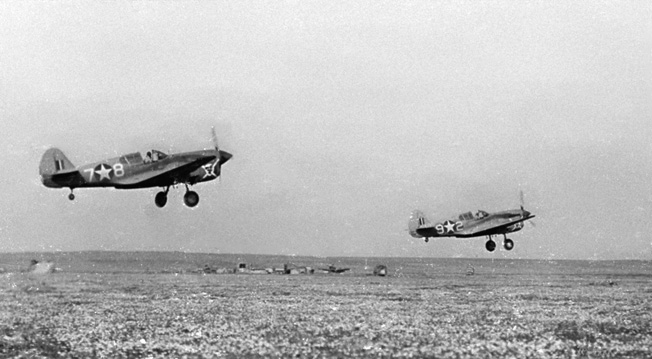
Aircraft and combat units from either area of operation could be rushed to the other, considering that they were on opposite sides of the vast Asian continent. Consequently, when the Japanese gained the advantage in Burma and China in the wake of the Doolittle Raid on Tokyo, thus ruling out planned heavy bomber operations against Japan, the U.S. War Department decided to halt some of the combat units that had been destined for China in the Middle East to meet an emerging threat. The British Eighth Army was battling the Afrika Korps. The decision was prompted at least in part by German Field Marshal Erwin Rommel’s new offensive in Libya and western Egypt and the resulting threat to Cairo and Palestine.
HALPRO and AQUILA
The first American air unit to serve in the Middle East was a special project under the command of Colonel Harry Halverson known as the Halverson Project, HALPRO for short. HALPRO was made up of a squadron of Consolidated B-24D Liberator bombers whose original mission had been to serve as the nucleus of a heavy bomber force based in China to begin a strategic bombing campaign against the Japanese mainland. Another force under the command of Colonel Caleb Haynes, known as AQUILA, had already arrived in India with a handful of Boeing B-17 Flying Fortress bombers and Douglas C-47 Skytrain transports with the same purpose in mind.
These two forces were to combine and launch attacks on Japan. Before the heavy bombers arrived, President Franklin Roosevelt authorized a daring attack on Japan by Army B-25 Mitchell medium bombers launched from the aircraft carrier USS Hornet. Although news of the raid was seen as a means of raising American morale, it was a disaster for the Chinese as Japanese troops invaded all areas from which future air attacks against Japan could be launched, killing more than 250,000 Chinese civilians in the process. Japanese troops took control of the regions where the bomber bases were under construction, leaving the B-17s and B-24s without an Asian mission. The HALPRO force was halted in the Middle East and the AQUILA B-17s were ultimately ordered to Palestine as well.
The commander of the new Middle Eastern Air Force was Maj. Gen. Lewis H. Brereton, who came to the assignment in a manner even more roundabout than the creation of his new command. Brereton, who was one of the highest ranking officers in the Air Corps before the war, was in the Philippines on December 8, 1941, where he had just assumed command of the Far East Air Forces. Two weeks later, President Franklin Roosevelt and British Prime Minister Winston Churchill agreed to abandon the Philippines to their fate, and Brereton and his headquarters were ordered to Australia to organize an Allied air effort against the Japanese.
Brereton was only in Australia for a little over two months; in March 1942 he transferred to India to organize and take command of the Tenth Air Force, a new organization planned for operations in the China-Burma-India Theater. Brereton’s stay in India was also short lived. In June he was ordered to Cairo to take command of American air operations in the Middle East. He was also ordered to take any available bombers and all of the transports in India with him. The B-17s of the 9th Bombardment Squadron, the former AQUILA project, were part of the move.
In 1941, after an inspection trip of British air forces in the region, Maj. Gen. George Brett recommended the long-range B-24 Liberator as the ideal heavy bomber for the Middle East, and deliveries of the four-engine bombers to the Royal Air Force soon commenced. By mid-1942, when the first American air units arrived, one squadron of Royal Air Force Liberators was operational in Palestine. When America entered the war, the British immediately requested the assignment of American heavy bombers to the Middle East, but the air staff balked, reasoning that any bombers sent there would take away from the planned buildup of a heavy bomber force in Britain.
Strategic Strike on Ploesti
The changing military situation in Libya and Egypt led to a change of heart; the War Department decided to establish an air force in the Middle East with one heavy bomber group, two of medium bombers, and six pursuit groups. Brereton’s new command was initially organized as the Middle Eastern Air Force, but plans were laid for it to become the Ninth Air Force once all of the necessary units had reached the theater.
As the situation in China deteriorated, ruining American plans for an air offensive against Japan from Chinese bases, Army Air Forces commander General Henry “Hap” Arnold obtained permission from President Roosevelt to halt the secret HALPRO force in the Middle East. Arnold planned to use the B-24s for a strike on the oil refinery complex at Ploesti, Romania, which was the largest single source of all German gasoline and oil supplies and one of the most important targets in the ETO.
The mission against Ploesti was flown on the night of June 12, 1942, with negligible results, but it did have the distinction of being the first American bombing mission of the war with strategic objectives. Ninth Air Force would be going back to Ploesti. After the first Ploesti mission, HALPRO remained at Lydda, Palestine, as the HAL Squadron for operations in support of the British Eighth Army against Rommel’s Afrika Korps. Its B-24s and the 9th Bombardment Squadron’s B-17s formed the nucleus of what would become the IX Bomber Command. On July 20, the two squadrons were organized into the 1st Provisional Group (Bombardment). The combined strength of the HAL and 9th Squadrons amounted to only 28 heavy bombers—19 B-24s and nine B-17s. Although the number of Liberators would increase, B-17 strength remained at less than a dozen airplanes.
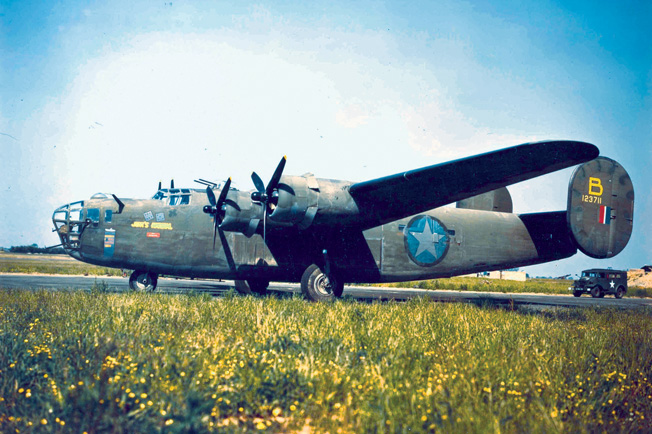
The American bombers joined with RAF Liberators in attacks on Axis shipping in the Mediterranean and targets in North Africa and along the Mediterranean shore. Although the American and British Liberators struck targets as far west as Benghazi, Libya, the B-17s’ limited range restricted them to missions no farther than Tobruk.
Reinforcements for the Middle Eastern Air Force came in late July, when the 344th Bombardment Squadron arrived as the advance element of the 98th Bombardment Group, which was on its way to Palestine from Florida. The 98th Group headquarters arrived by ship in mid-August along with personnel of the 57th Fighter Group, equipped with Curtiss P-40 Tomahawk fighters and the first American fighter group assigned to the Middle East.
Meanwhile, a group of medium bombers, B-25s of the 12th Bombardment Group, crossed the South Atlantic, then flew up through Central Africa to its new base in Egypt. Both the 12th Bombardment Group and the 57th Fighter Group went into training with the British before entering combat in North Africa.
Preparations for Operation Torch
The original comprehensive War Department plans for air strength in the Middle East were never reached, although heavy bomber strength would increase to twice that originally planned. Political maneuvering cost the Middle Eastern Air Forces some of its projected assets when newly promoted Brig. Gen. James H. Doolittle, who enjoyed star status in Washington because of his Tokyo Raid, put pressure on Arnold to let him have the 33rd Fighter Group for his new Twelfth Air Force.
The Twelfth Air Force was being formed to support the American landings at Casablanca, and it was siphoning off assets from other organizations. There was mixed reaction in Washington to the request as most of the air staff believed air superiority over the Western Desert would be beneficial to the overall success of the Allied campaign in North Africa. The War Department chose to leave the decision up to General Dwight D. Eisenhower, who was to command the invasion force. Ike naturally wanted the group under his personal command, so the 33rd went to Twelfth.
As a replacement for the 33rd and in recognition of the need for P-40s in Egypt, the War Department elected to send the 79th Fighter Group to the Middle East. Although the group arrived in October and many of its pilots flew combat missions with other organizations, the 79th did not become operational as a combat unit until the spring of 1943.
Without their own fighter escorts—the 57th Group P-40s were working with the British Western Desert Air Force—the Middle Eastern Air Force heavy bombers were forced to depend on the RAF for escort, or to go it alone to their targets. Unlike Generals Ira Eaker and Carl Spaatz, who had gone to England to organize a daylight bombing campaign, Brereton was not hamstrung with the desire to prove American theories on daylight bombing, so his bombers operated at night as well as by day.
Losses among heavy bombers operating in the Middle East were fairly light, especially in comparison to those starting to occur among the Eighth Air Force bombers on daylight missions over Western Europe. The heavy bombers were achieving considerable success as they struck targets all along the North African coast. Several ships were hit and some were sunk, and sticks of bombs fell on warehouses adjacent to the docks at Mediterranean ports. On the night of September 22, 1943, the B-24s hit an ammunition-laden ship at Benghazi and blew it up, causing major damage to the harbor facilities. The brunt of the task was borne by the Liberators, since the Fortresses lacked the range to reach Benghazi from their bases in Palestine. The shorter range B-17s joined British Vickers Wellington bombers and American B-25s in strikes on Tobruk.
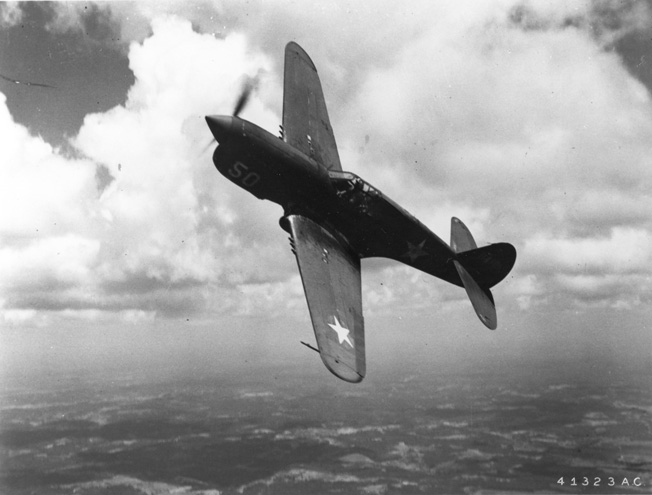
Before American ground forces landed at Casablanca in early November, the British Eighth Army met and defeated the Afrika Korps at El Alamein in the decisive battle of the North African campaign. Prior to the battle, the RAF had more than 1,000 aircraft of all types in North Africa. U.S. Army Air Forces strength stood at 56 P-40s, 46 B-25s, and 63 heavy bombers, of which 10 were the war-weary B-17s Brereton had brought with him from India. Allied air strength outnumbered that of the Axis considerably. The Luftwaffe was tied down on the Eastern Front, where things had not gone well for the Germans since the previous winter.
El Alamein was the first significant engagement for the U.S. fighters, and the P-40 pilots of the 57th Fighter Group made a good showing. They joined with RAF P-40s in fighter bomber attacks on German positions and engaged German and Italian planes in the air.
Changes in IX Bomber Command
Throughout the summer of 1942, the formal organization of the Middle Eastern Air Forces was limited. In October the IX Bomber Command was staffed, although the command itself remained in an unofficial status. Colonel Patrick Timberlake of Brereton’s staff took issue with British claims to control of the American heavy bombers, asserting that it was a violation of an agreement worked out between General Arnold and key British leaders that called for “homogeneous American formations.”
While Timberlake conceded that it might be appropriate for the U.S. fighter and medium bomber groups, of which there was one of each in the Middle East at the time, to operate under British control, American heavy bombers constituted four-fifths of the heavy bomber strength in the theater. As a result of Timberlake’s memo, the British agreed to the establishment of an American bomber command in Cairo, then went so far as to turn over their own Liberator squadron to its control. Timberlake was placed in command of the new IX Bomber Command.
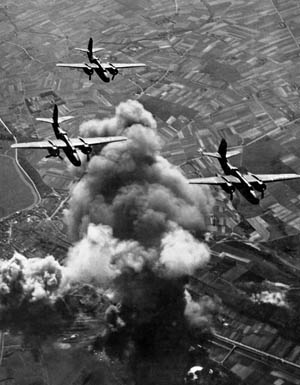
On November 8, 1942, Lt. Gen. Frank Andrews took command of the U.S. Army Air Forces Middle East. The senior U.S. Army officer in the area, Andrews was an Air Corps officer who had his own ideas on organization of air forces, ideas that were becoming widely accepted in the overseas commands. Four days after assuming command of the theater, Andrews issued a general order establishing the Ninth United States Army Air Force with Brereton in command. On the same day, Brereton activated IX Headquarters Squadron and IX Service Command. Although it was already functioning in an unofficial status, IX Bomber Command was formally established two weeks later, on November 27.
With American troops ashore at Casablanca, the British Eighth Army began advancing westward into Libya. The IX Bomber Command moved its bases to the Nile Delta from Palestine and established forward bases just west of Tobruk. On November 1, the 1st Provisional Group was reformed to become the 376th Bombardment Group, giving IX Bomber Command two full groups of B-24s. The remnants of the HALPRO force were reinforced and replaced by new personnel with new airplanes coming in from the United States. A single squadron of B-17s remained in the command, but their slower speed and limited range prevented them from operating effectively with the Liberators.
Three Heavy Bomber Groups
After the Casablanca landings, two B-17 groups left the Eighth Air Force in England and moved to North Africa to join Doolittle’s Twelfth Air Force. In December the 93rd Bombardment Group, one of two B-24 groups in the Eighth Air Force, was deployed under temporary duty orders to North Africa with three of its four squadrons to supplement XII Bomber Command. The 93rd flew a couple of missions out of Algiers, then moved to western Egypt to join IX Bomber Command, where its B-24Ds would be operating with identical types.
With the arrival of the 93rd, IX Bomber Command had control of three heavy bomber groups, a formidable force, and was able to begin mounting formations of considerable size. In return for the 93rd, the 9th Bombardment Squadron and its B-17s departed Egypt for North Africa and Twelfth Air Force, leaving the IX Bomber Command as an all B-24 force since the B-25s of the 12th Bombardment Group were still operating under British control.
Throughout December and most of January, IX Bomber Command concentrated its efforts on German targets in Tunisia. On January 2, the 12th Bombardment Group’s B-25s, which had previously operated under British control, joined the B-24s in an attack on Crete. It was the first mission for the medium bombers as part of IX Bomber Command. An untimely dust storm wreaked havoc with the Mitchells—only 12 of a planned 36 were able to take off and one of those turned back without reaching the target. Eleven Mitchells bombed their target, but two were lost on the return flight. Most of the others failed to make it back to their home base because of excessive fuel consumption and had to put down on other fields.
By January two additional fighter groups had arrived in the theater, the promised 79th and the 324th. Like the 57th that preceded them, the new groups were equipped with P-40s. Ninth Air Force also had received its own troop carrier group, the 316th, which was originally intended to go to a project in the Caucasus. The fighters continued to operate with the British, while the troop carrier transports went to work hauling supplies for the fighter and bomber squadrons and supporting the British ground forces. Air evacuation of casualties was a major mission of the troop carriers.
Target: Europe
After the capture of Tripoli, IX Bomber Command turned its attention toward targets in Europe, specifically Naples, Messina, and Palermo. The three cities were important links in the Axis supply chain to Tunisia. The B-24s were still based in the Nile Delta but staged out of a forward base at Gambut near Tobruk, where the bombers were refueled before departing for the long missions to Sicily and Italy. In late January the B-24 groups left the Nile Delta and moved the 300 miles to Gambut-Main. The 93rd Bomb Group returned to England and the Eighth Air Force, but it would soon be back.
With the Allied victory in Tunisia, the Ninth Air Force turned toward the reduction of enemy defenses and transportation centers in preparation for the upcoming invasion of Sicily. Liberators of the IX Bomber Command joined with Twelfth Air Force B-17s in attacks on targets in Italy and airfields and other complexes in Sicily. Some of the 12th Bombardment Group’s B-25s were attached to Twelfth Air Force to support the invasion.
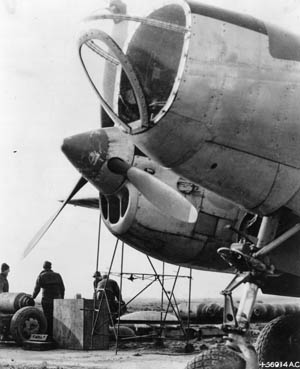
In preparation for the landings, IX Bomber Command was reinforced with three Eighth Air Force B-24 groups: the veteran 93rd, which had served with IX Bomber Command in the winter, along with the 44th and 389th Groups. At the time, the three groups constituted all of VIII Bomber Command’s Liberator strength. The new groups joined the 98th and 376th at bases in the vicinity of Benghazi, Libya, and participated in raids on targets in support of the upcoming invasion of Sicily. On July 19, IX Bomber Command’s B-24s, supplemented by the Eighth Air Force groups, joined Twelfth Air Force B-17s in an attack on railroad marshaling yards around Rome.
The arrival of the additional B-24s from England had a dual purpose. Not only were they there to increase heavy bomber strength in the Mediterranean for the Sicily campaign, their presence was prompted to a large degree by the most ambitious plan of the war—a low-level attack on the Ploesti oil fields, the same target that led to the assignment of the HALPRO force to the Middle East.
On August 1, 1943, five B-24 groups departed Benghazi and set out across the Mediterranean for Ploesti. The B-24s came in over the refineries at treetop level in the face of intense enemy fire. In spite of heavy casualties, most crews managed to put their bombs into the refinery complex, although some of the groups struck targets other than the ones they had been assigned. A navigational error on the part of the lead formation caused some of the B-24s to fail to bomb their intended targets, and most of one group failed to bomb the refineries at all, causing the mission to be less of a success than planned. Less than two weeks later, the combined force of Liberators struck the aircraft factories at Wiener Neustadt, Austria.
“Combined Bomber Offensive”
Once Allied troops were ashore in Sicily and Italy, the Army Air Forces began a massive reorganization in preparation for the invasion of Normandy. At the Casablanca Conference in early 1943, the Allied leaders agreed to conduct a “combined bomber offensive” against Germany from British and Italian bases. The Eighth Air Force in England would be the northern arm of the American strategic bomber force, and plans were made for the creation of a second force that would attack targets in Germany from the south.
A new headquarters derived from Headquarters, Eighth Air Force, the U.S. Strategic Air Forces, was planned to control heavy bomber operations against Germany. The success of RAF, Ninth, and Twelfth Air Force fighter bombers and light and medium bombers in support of ground forces led to the decision to also establish tactical air forces dedicated to ground support. The result was the decision to transfer Ninth Air Force to England, where it would become the American tactical air force responsible for supporting the Normandy landings and subsequent ground operations in Western Europe. The RAF established a counterpart as II Tactical Air Force. In preparation for the move, the Ninth’s fighter and medium bomber groups transferred to Twelfth Air Force, which had been given the same mission in the Mediterranean, and IX Bomber Command’s two B-24 groups joined the B-17s from the Twelfth Air Force to form the newly established Fifteenth Air Force.
The idea for a separate tactical air force in England had been developed as early as May 1943, with initial plans for it to emanate from the VIII Support Command. The unit started appearing in planning papers as the Eighth Tactical Air Force, but plans were soon made to form an air force-level unit entirely separate from and equal to the Eighth Air Force.
On July 31, General Arnold offered command of the new unit to General Brereton since plans were already under way for Ninth Air Force assets in the Middle East and North Africa to be rolled into the Twelfth Air Force and for the heavy bombers to go to the new Fifteenth. Having served in three theaters and several major campaigns, Brereton was the most widely experienced general officer in the U.S. Army. He arrived in England on September 10, where he conferred with Lt. Gen. Ira Eaker, who at the time was the senior U.S. officer in England, then departed for the United States for a meeting with Arnold and a short leave.
Brereton was back in England by mid-October. During the various discussions, the Army Air Forces staff had decided that only the Ninth Air Force headquarters and the headquarters of the IX Bomber, Fighter and Service commands would go to England. Eighth Air Force would provide Ninth with its initial combat and service units, but the bulk of the new tactical air force would come with units arriving from the United States.
Ninth Air Force in England
On October 15, four medium bomber and two troop carrier groups transferred from the Eighth to the Ninth Air Force to became its first operational units in England. The 322nd, 323rd, 386th, and 387th Bombardment Groups were equipped with Martin B-26 medium bombers, while the troop carrier groups flew Douglas C-47s. The first fighter group to join the new Ninth Air Force was the 354th, a unit whose arrival in England was a milestone in the air war since it was equipped with North American P-51B Mustangs at a time when U.S. fighter squadrons in Europe were equipped with Lockheed P-38 Lightnings and Republic P-47 Thunderbolts.
Several VIII Fighter Command pilots, including Lt. Col. Don Blakeslee, were temporarily assigned to the 354th to train the newly arrived pilots for combat. They were so impressed with the P-51 that they mounted a campaign to have all future P-51 groups assigned to VIII Fighter Command. Their campaign was successful, and by mid-1944 most of the Eighth’s fighter groups were equipping with Mustangs, and the P-47s they had been flying were going to groups assigned to Ninth. Although initial plans called for several P-51 groups with the Ninth, only two Mustang-equipped fighter groups and a reconnaissance group were actually assigned to the Ninth Air Force. All of the other fighter groups flew P-47s, except for three groups that were equipped with P-38s.
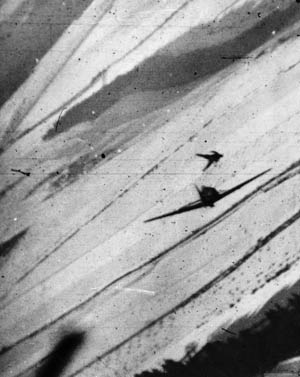
The diversion of the P-51s to VIII Fighter Command came about because of military politics, which seemed to be prevalent in the European Theater. In late 1943, General Carl Spaatz returned to England, and in early January he took command of the U.S. Strategic Air Forces, Europe, the new command that had been created to oversee U.S. Army heavy bomber operations against Germany. As the senior Army Air Forces officer in Europe, Spaatz lost no time exerting the power of his new rank and position. He sought to exercise control over all U.S. air units in England, especially Ninth Air Force.
During the planning for the new tactical air force, Brereton and Army Air Forces planners had visualized it as an independent command apart from the strategic bomber forces since its mission was the dedicated support of the ground war. When he got wind of the plan, Spaatz became incensed. As the senior air officer in Europe, he did not wish to have another Army Air Forces command operating on what he considered to be his private turf. In a preemptive move, he wrote a strong letter to Brereton making it clear that he was going to control the Ninth Air Force and, furthermore, that he would be the link in the chain of command between the Ninth Air Force and Headquarters, U.S. Army Air Forces in Washington.
Brereton and his staff were already inclined to believe that Spaatz was discriminating against them in favor of the Eighth Air Force. Spaatz outranked Brereton, both in military rank and command authority, so the Ninth Air Force commander was in no position to dispute the senior commander’s authority. Several senior officers in Washington felt that it was a mistake for a strategic bombing organization to have control of an air force that was charged with supporting ground forces, but in the end Arnold went along with Spaatz. This arrangement was problematic, but as the D-Day landings approached Supreme Allied Commander Dwight Eisenhower temporarily solved the problem by placing all of the air units under his direct command. Eisenhower issued an order that all air operations—including heavy bombers—would be in support of the ground forces until the Normandy beachhead had been established.
Operating Under the Eighth Air Force
Throughout the winter months of 1943-1944, the Ninth Air Force was augmented. The four B-26 groups of IX Bomber Command were beefed up with the addition of four more medium bomber groups of B-26s and three light bombardment groups equipped with Douglas A-20s. One of the missions of the Ninth Air Force would be to provide troop carrier support for airborne and ground forces, and the building up of IX Troop Carrier Command was a priority. The training and equipping of troop carrier groups in the United States had reached the saturation point, and it was not until a few weeks before D-Day that Troop Carrier Command reached its planned strength of 14 groups, including some 2,700 gliders. Future events revealed that this was not enough, as the demands for troop carrier aircraft by the advancing ground and air units exceeded availability.
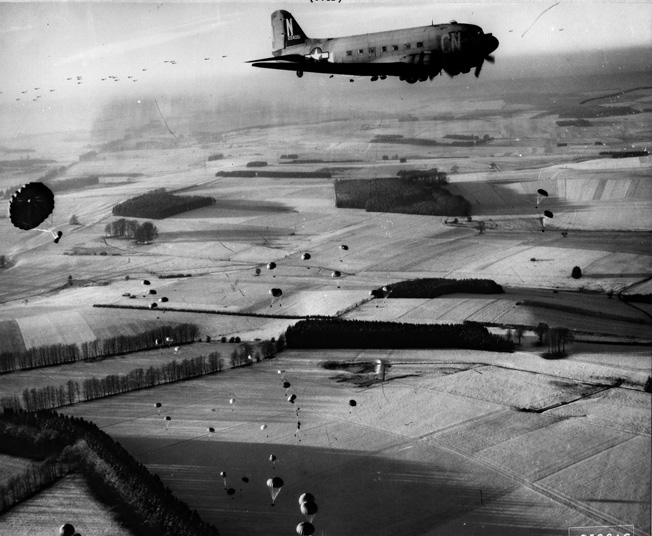
The buildup of fighter forces went more smoothly. By May, the Ninth Air Force had received 18 fighter groups with some 1,500 aircraft assigned, including reconnaissance and night fighter squadrons. Fighter strength was divided into two tactical commands with the bulk of the fighters assigned to the IX Tactical Air Command (TAC), while two wings with a total of seven groups were assigned to a second command designated as the XIX TAC. The XIX TAC was dedicated to the support of General George Patton’s Third Army.
For the first several months of Ninth Air Force operations out of England, its fighters and bombers functioned essentially under the control of the Eighth Air Force. The first IX Bomber Command mission was to Evreux-Fauville Airfield, a Luftwaffe base some 50 miles west of Paris. Spaatz hoped that the medium bombers would divert German fighters away from B-17 and B-24 formations on their way to Germany, but the Luftwaffe left the B-26s alone and continued to hit the heavies. Ninth fighters were assigned to escort missions, a task that took them away from training for the vitally important mission of providing close air support for the ground forces once they were ashore in Normandy.
The Ninth Air Force Over France
The first Ninth Air Force fighter mission was flown on December 1, 1943, when a 28-plane formation of P-51s flew a sweep over northeastern France. Four days later the 354th Fighter Group flew its first escort mission as it accompanied bombers to Amiens. On December 13, the new P-51s joined with P-38s from the Eighth’s 55th Fighter Group escorting B-17s on a 490-mile mission to Kiel, the longest escort mission to date.
The IX Bomber Command’s B-26s focused on V-weapon sites in February, and on the 8th they flew their first double mission day. As the heavy bombers went into Germany during Big Week on February 24 and 25, the B-26s struck German airfields in Holland and V-weapon sites in France. Attacks on buzz bomb launch sites continued into March, but during the middle of the month the B-26s switched to German transportation targets in preparation for the upcoming invasion.
In mid-March the IX Fighter Command began fighter bomber attacks on targets on the Continent. This was the mission for which the IX and XIX Fighter Commands had been established, and on May 20, the Ninth Air Force started referring to its groups as fighter bomber groups and squadrons instead of simply fighter groups. Fighter bombers struck railroad marshaling yards, V-weapon launch sites, airfields, railroads, bridges, and essentially any target that would reduce the Germans’ ability to reinforce their units in the vicinity of the Normandy beaches. When the possibility was presented, the fighter bombers fought the Luftwaffe in the air.
The Ninth Air Force was charged with the major responsibility for covering the beaches on D-Day. While British Spitfires were assigned to provide low cover, five groups of P-47s were to maintain high cover. P-38s would operate over the ships. Two groups of IX Fighter Command P-38s were joined by four from VIII Fighter Command for the task. Two other P-38 groups and four P-47 groups were assigned to strike gun batteries just before the troops hit the beach. The 11 A-20 and B-26 groups bombed German heavy gun batteries on the beaches, then hit bunkers behind Utah Beach.
From June 6 forward, the air war became a Ninth Air Force and II Tactical Air Force show. Although the Eighth and Fifteenth Air Forces and RAF Bomber Command continued their strategic bombing campaign against German cities and industrial targets, the primary mission of the air forces was now to support the troops on the ground.
And support they did. So much so that General Patton came to think of the fighter bombers of the XIX Tactical Air Command as the protection for his flanks. Patton considered the XIX TAC and Brig. Gen. O.P. Weyland, its commander, as part of Third Army and came to depend heavily on the fighter bombers as he planned the daring attacks for which he is famous.
Supporting the Normandy Break-Out
After August 8, 1944, the Ninth Air Force operated under a new commander. Brereton was shifted to command of the newly created First Allied Airborne Army, an appropriate assignment since he had been in charge of Billy Mitchell’s planning for paratroopers in World War I and had been involved with American paratroops before the war. Brereton’s replacement as Ninth Air Force commander was Lt. Gen. Hoyt P. Vandenberg, who would command the Ninth until after VE-Day.
Ninth Air Force P-47s assumed a major role in Normandy after the Allied ground forces finally broke out of the hedgerows that kept them bottled up. Armed with rockets, bombs, and napalm in addition to their eight .50-caliber machine guns, the P-47 pilots would descend to just above the treetops to attack anything that moved on the narrow French roads and farm lanes. German officers would later attribute their failure to defeat the Allied landings to the awesome power of the deadly fighter bombers.
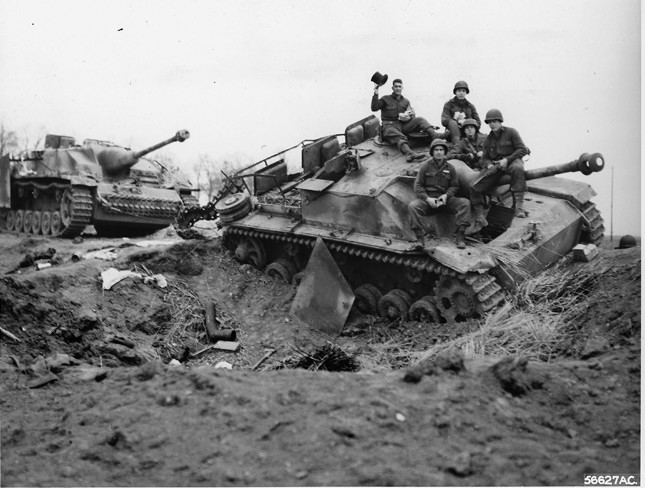
Shortly after the Normandy beachhead was secured, Maj. Gen. Elwood “Pete” Queseda’s IX Tactical Air Command moved across the English Channel to new airfields that had been scraped out of French soil just inland from the beaches. The forward airfields brought the fighter bombers to within a few miles of their targets—the troops and vehicles of the German Seventh Army.
The Germans gave the fighter bombers a name of their own. They called them “Jabos,” the German name for fighter bomber. American P-47s and British Hawker Typhoons were credited with the destruction of thousands of German tanks and other vehicles. They were so feared that the Germans took to making their movements at night, when the fighter bombers were prevented from detecting them in darkness.
From Operation Market-Garden to the Ardennes Offensive
The IX Troop Carrier Command also assumed a heretofore unprecedented role as it supported the advancing armies once they broke out of the beachhead. Troop Carrier Command transports braved intense enemy fire to drop their troops just behind the beaches on D-Day, then brought in supplies and reinforcements. When Patton’s Third Army began rolling across France, Troop Carrier transports brought in the fuel that kept them moving as they advanced well beyond their ground lines of supply. Air transportation of supplies for ground forces became so important that when the availability of C-47s became a problem B-24s were detached from Eighth Air Force and assigned to the IX Troop Carrier Command for missions carrying cargo—particularly gasoline—into France.
Some planes, conducting “trucking missions,” landed on recently captured Luftwaffe airfields with loads of fuel for Patton’s tanks and trucks. Liberators were loaded with ammunition and supplies for airdrop to ground units, especially during Operation Market-Garden, when B-24s airdropped supplies to American and British paratroops in Holland and took significant losses in the process.
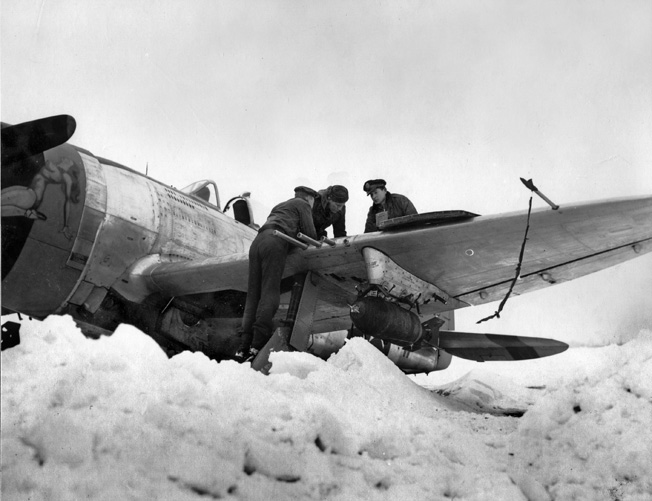
The main disadvantage of a dependency on air support is the weather, and when the European winter settled in on Belgium and the Ardennes Forest in late 1944, the Germans took full advantage of it to launch the most effective counterattack since the Allied breakout from the beachhead. Low clouds, fog, and snow covered the region, preventing Ninth Air Force fighter bombers from flying. Even worse, the miserable conditions ruled out aerial resupply, which almost doomed the 101st Airborne Division at Bastogne, surrounded by Germans forces and cut off from all land supply routes.
Fortunately, the weather cleared before the paratroopers ran completely out of food and ammunition, and the IX Troop Carrier Command came to the rescue. Improving weather allowed IX and XIX Tactical Air Command fighter bombers to take to the skies to attack the German forces, most of whom had found themselves stranded when they ran out of fuel for their vehicles. Without the Ninth Air Force and its counterpart, the British Second Tactical Air Force, the Allies may well have lost the Battle of the Bulge.
Ninth Air Force: The Warfare of the Future
One of the greatest ironies of World War II is that the Eighth Air Force immediately became obsolete with the Allied victory in Europe, but the kind of warfare introduced by the Ninth Air Force was the wave of the future. Nearly all of the B-17s and B-24s that survived the war had been turned to scrap metal within a few years, but the fighter bomber concept has survived through the Jet Age. High performance jet fighter bombers have become the most powerful weapons of modern warfare.
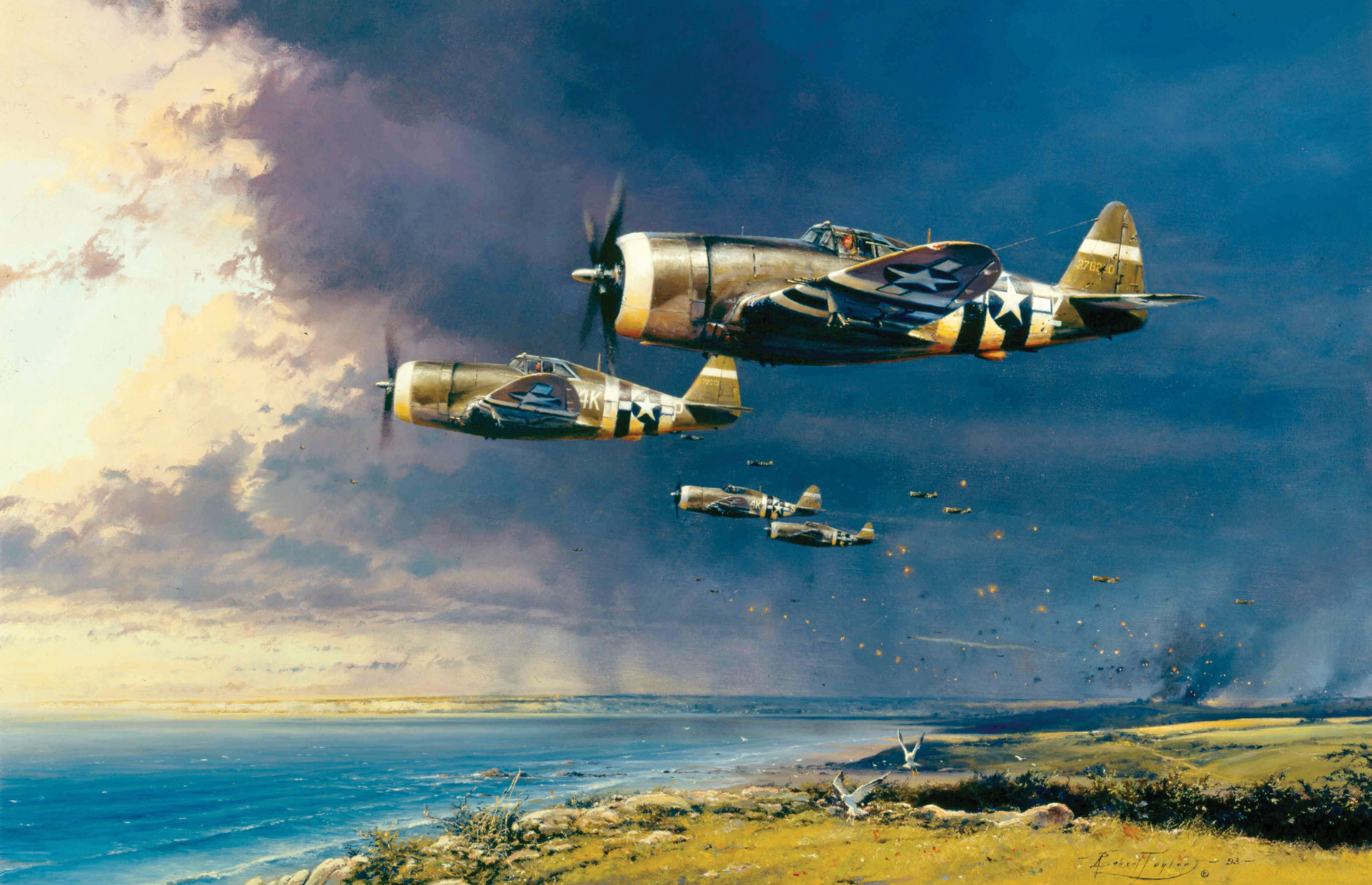
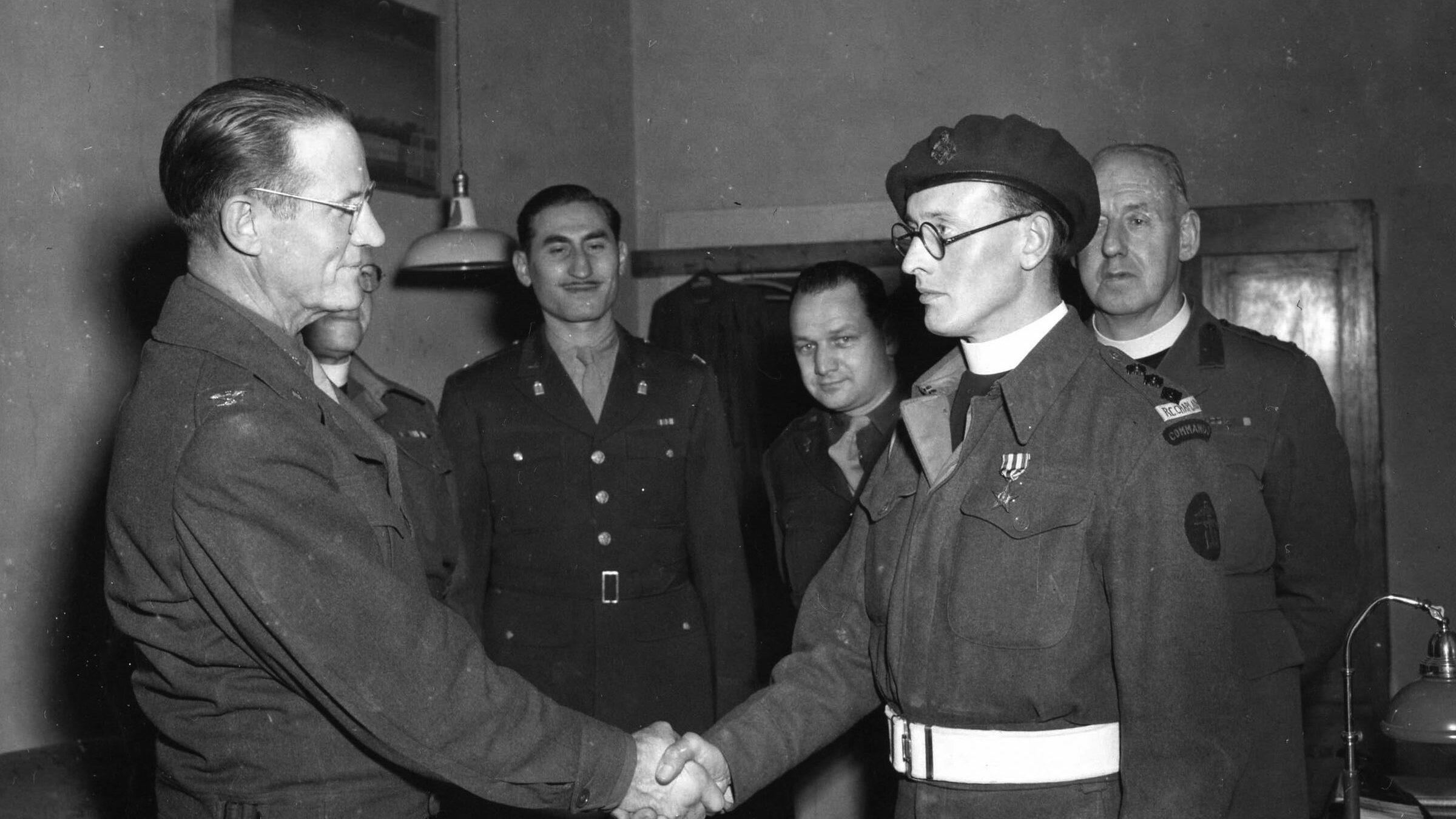
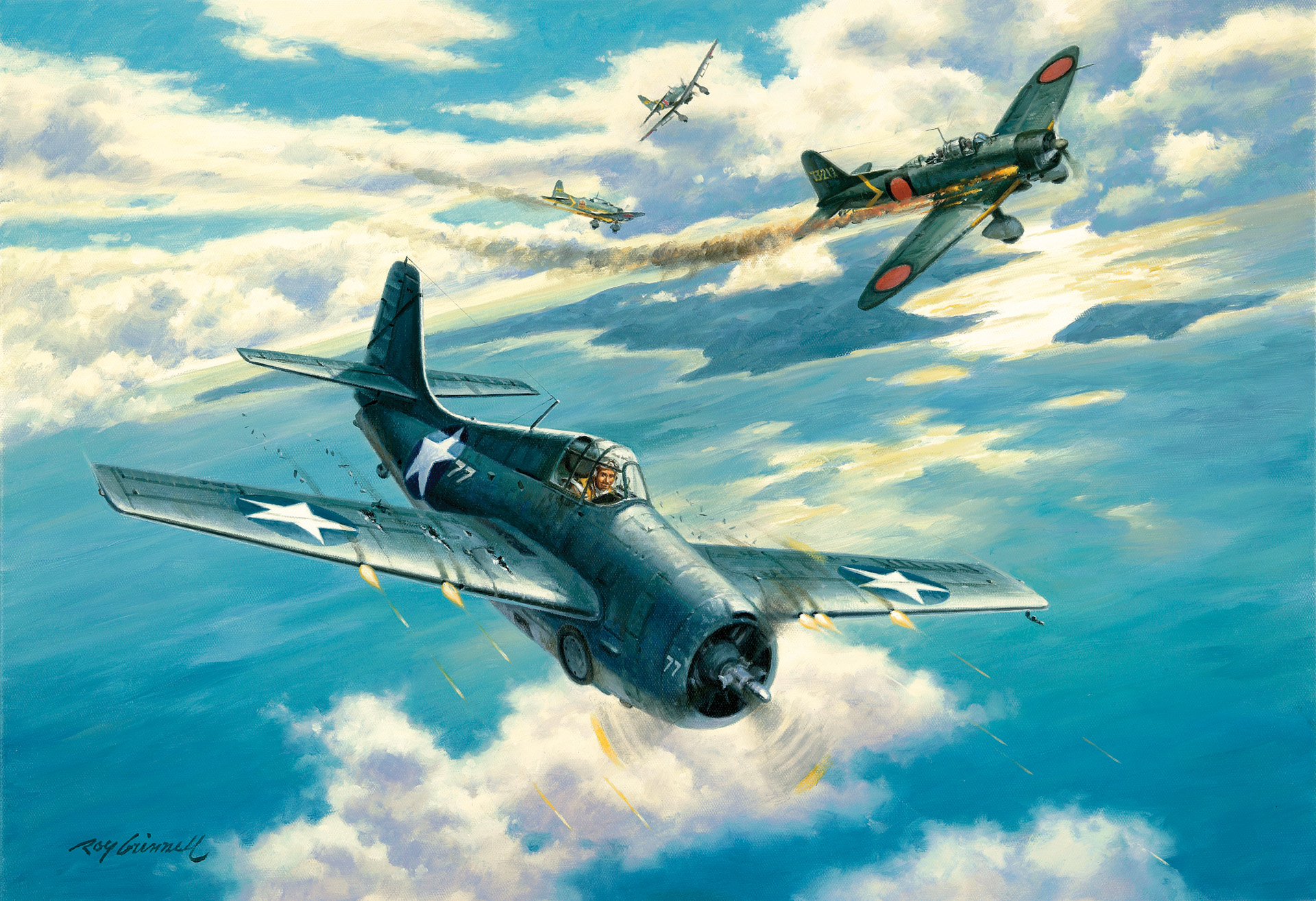
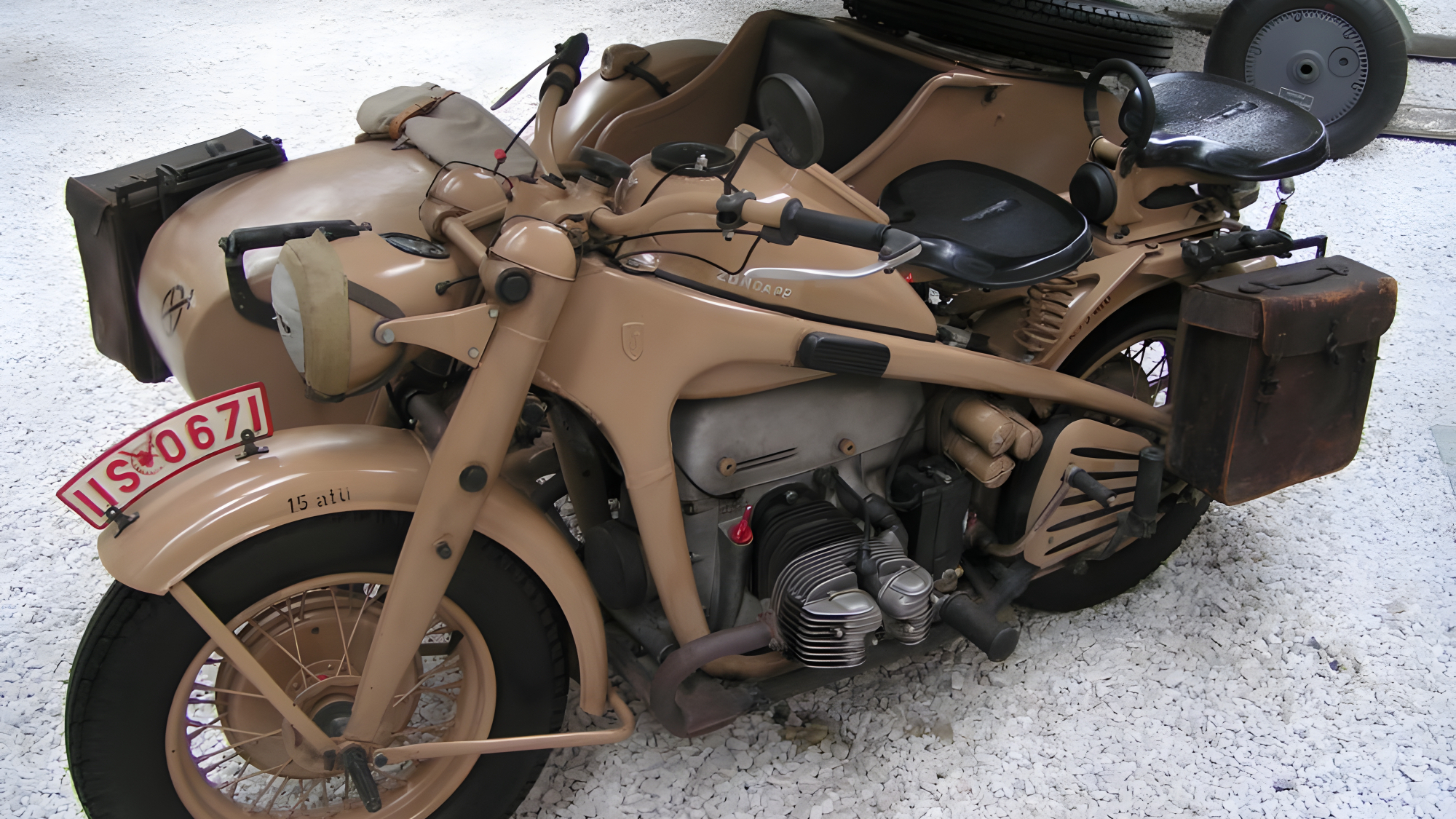
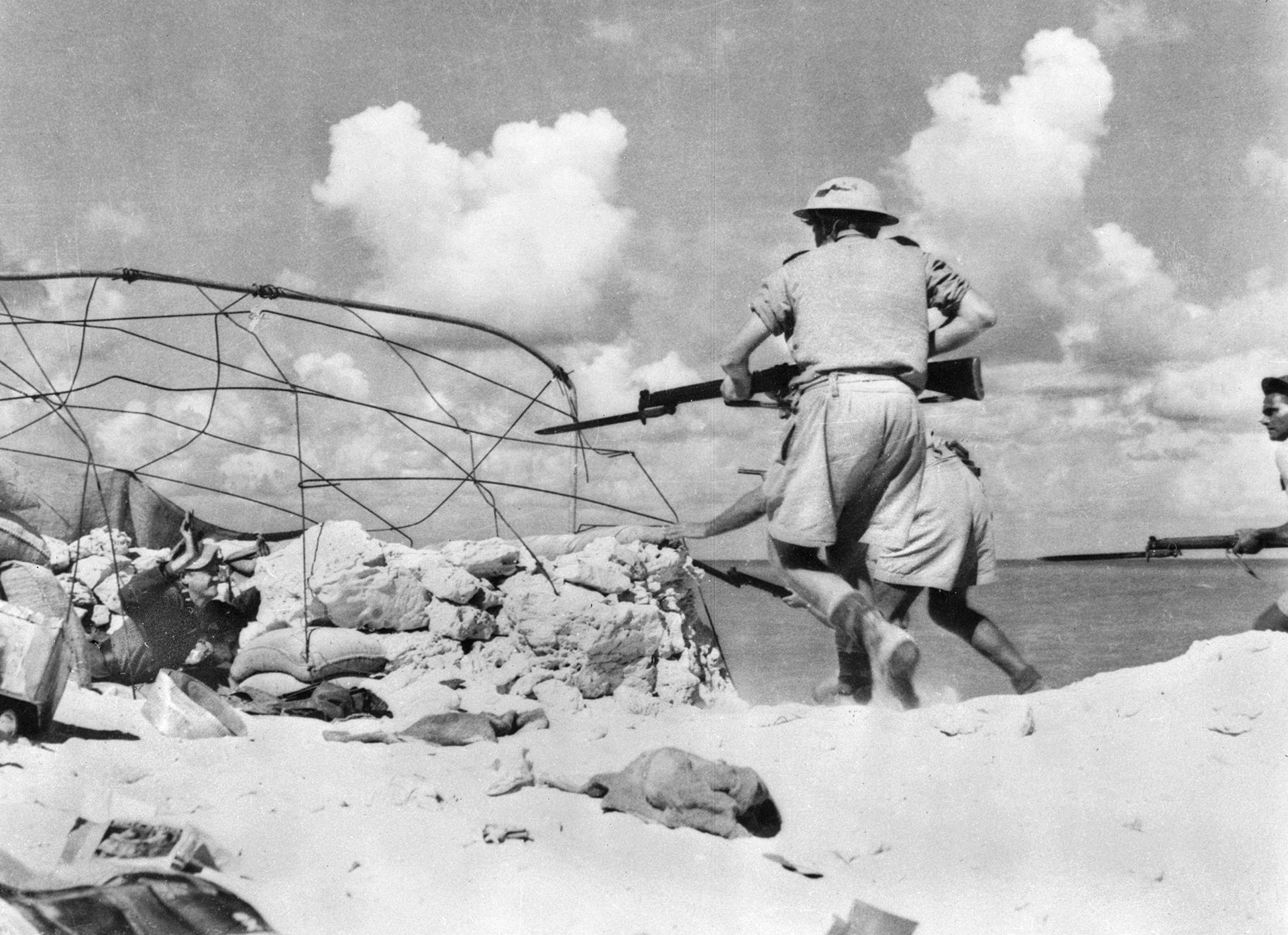

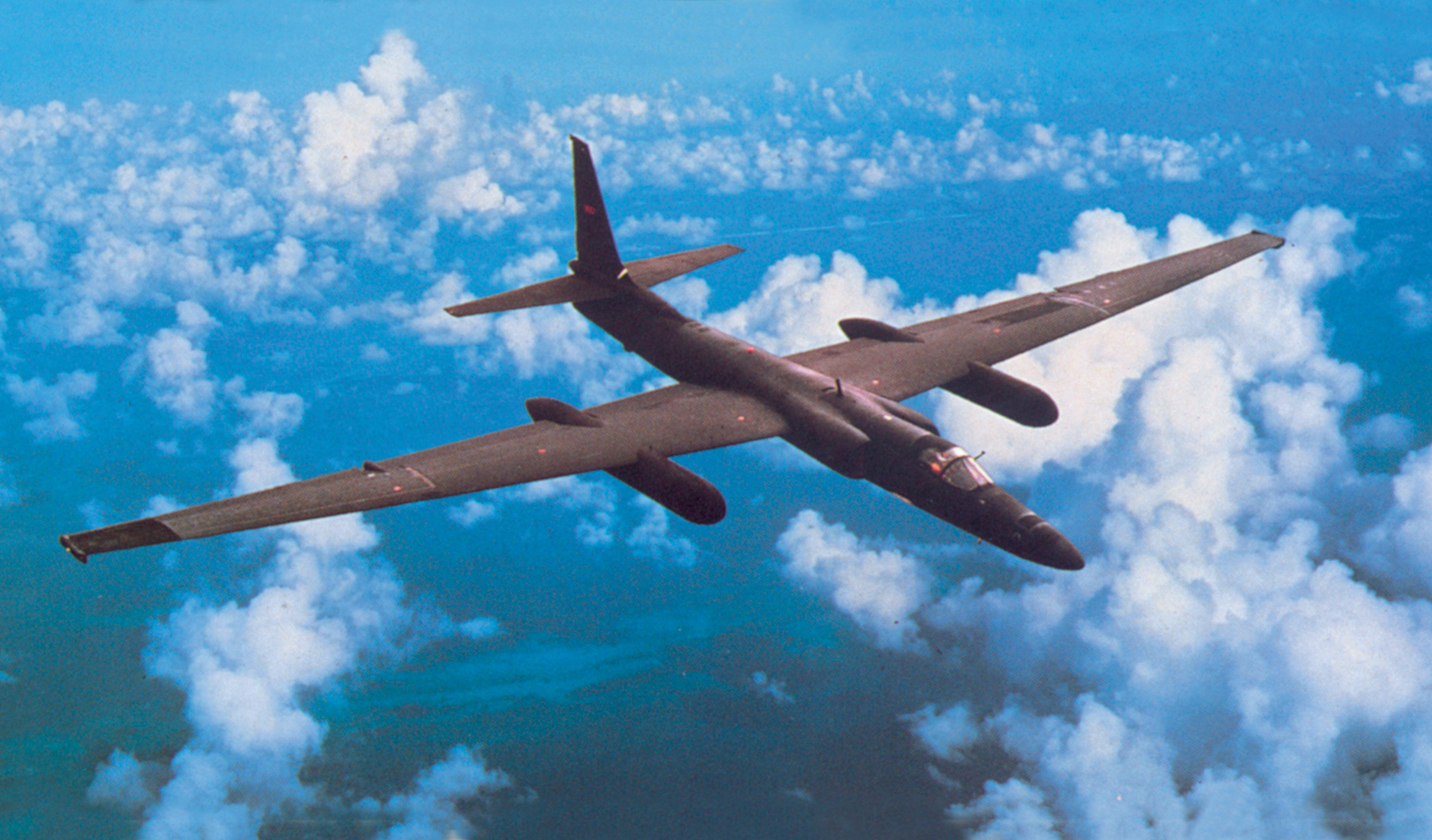
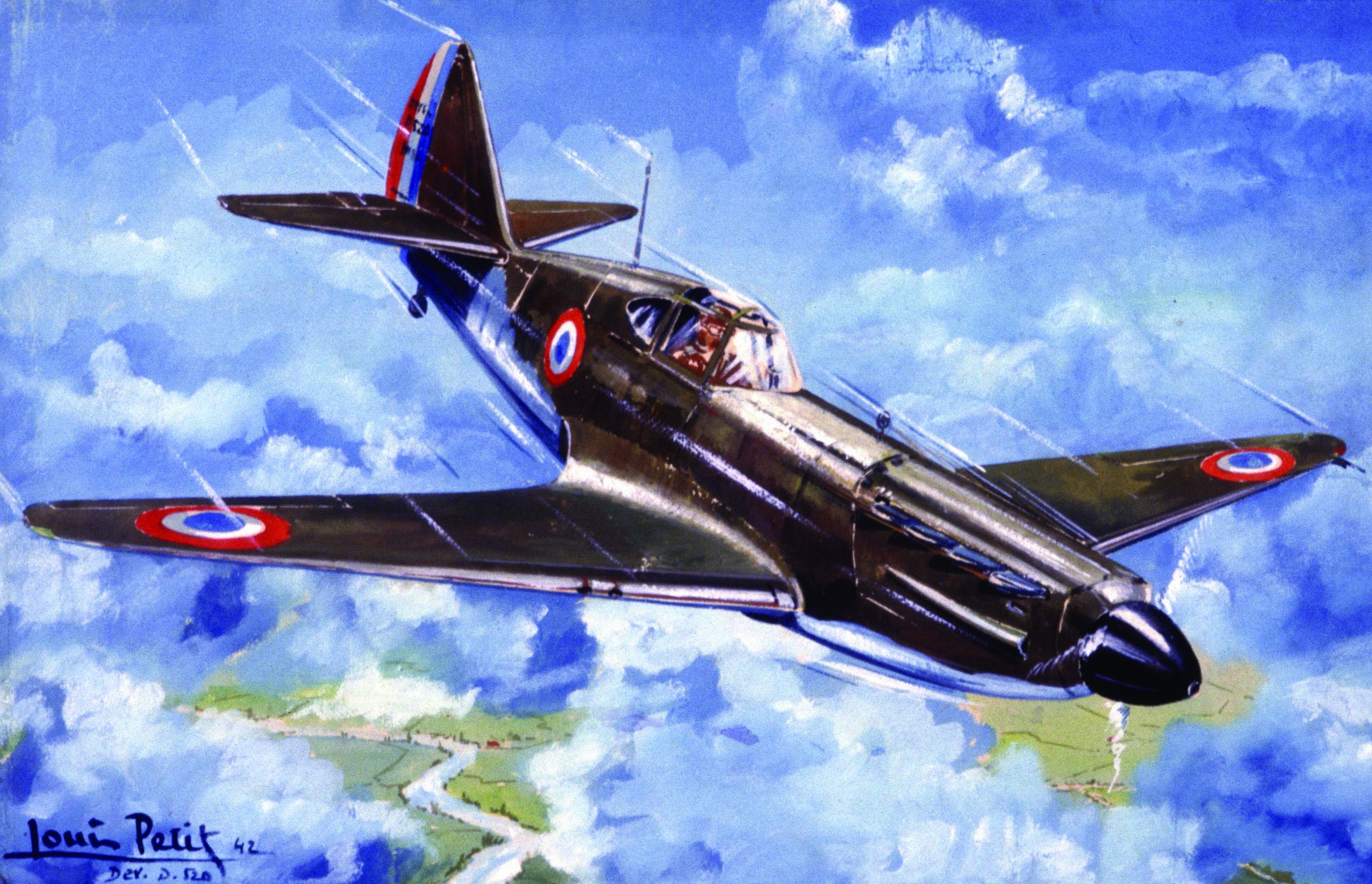
My father Martin Clemens Beil, at the end of WWII, was commanding surgeon ninth Air Force.
any info regarding medical service ninth Air Force.
Martin,
Two sources of information come to mind. The first is the University of Akron. They are the depository for Ninth AF artifacts. The second source is the Air Force Historical Research Agency in Montgomery, AL. They have extensive records concerning the Ninth AF. These are mostly on microfilm and more recently, some are digitalized.
Good luck,
Paul Sailer
A correction – I probably wrote it the way it appears but Frank Andrews went to the Middle East to command US Army FORCES in the Middle East, not US Army Air Forces in the Middle East. It is widely believed that Marshall planned to give Andrews command of all Allied forces in the ETO but he died tragically when his B-24 crashed in Iceland while he was on the way to the States to meet with senior officials and Ike got the job.
Sam – thanks for the clarification.
This is the remarkable story of the tiny U.S. fleet that staged the greatest upset victory in the history of naval warfare. Facing sure destruction off the Philippines at the hands of a massive Japanese fleet that included the most powerful battleship ever built, the Yamato, seven overmatched U.S. destroyers and destroyer escorts (or “tin cans” in Navy speak) charged the Japanese head-on. In the Battle off Samar, a steel shattering two-hour daylight surface engagement, the last ever fought, the task unit known as “Taffy 3” saved General Douglas MacArthur’s invasion force and, at a cost of five stout ships and 850 sailors, etched its name in U.S. Navy legend.